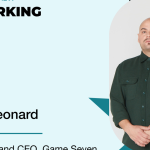Molson Coors is all about going “beyond traditional media,” CMO Sofia Colucci said—and for a long time, that’s all the brand could do on Super Bowl weekend.
For more than three decades, the brewer was locked out of traditional broadcast advertising’s biggest stage, when competitor Anheuser-Busch InBev was the Super Bowl’s exclusive alcohol advertiser. AB InBev declined to renew that deal in 2022, and for the past two years, Molson Coors has seized the opportunity to run traditional Super Bowl commercials. But the beer brand didn’t throw its playbook from those prior 33 years out the window entirely.
This year’s Super Bowl campaign included a TV ad for Coors Light with an experiential tie-in, as well as a less traditional campaign spotlighting Miller Lite that was all about in-person and social engagement.
It’ll take a little longer than a few days for the brand to fully see results from a big-game ad, but the off-broadcast components of both campaigns have already proven their worth, Colucci told Marketing Brew.
Cracking the code
Coors Light and Miller Lite were both “on fire last year,” Colucci said, helping propel a YoY net sales increase of more than 9% for the parent company. Coors Light had the most momentum, and its position as the company’s biggest brand in the US and Canada earned it the broadcast treatment, Colucci said.
Miller Lite, however, wasn’t left high and dry—it ran 1,000 ads instead of one.
The brand worked with actor and comedian Rob Riggle for its “Running of the Beer Ads” campaign, which encouraged adults 25 and older to sign up to become “walking ads for Miller Lite,” Colucci said. The first 1,000 people to sign up were given Miller-branded jerseys with QR codes that others could scan during the Super Bowl to win “free beer money,” aka a $5 Venmo payment from Miller Lite.
The QR codes drove thousands of people to the site on Super Bowl Sunday, plus more than 2 billion earned media impressions before the game, according to Colucci.
“We got so much brand love,” she said. “Everything that happened during the game was more just gravy, because we’d achieved our mission, which was to really be part of that Super Bowl conversation leading into the big game.”
All aboard
Though Coors Light ran its “Return of the Coors Light Chill Train” ad featuring LL Cool J during the broadcast, it also incorporated experiences to help meet its goals of “building brand love and selling beer,” Colucci said.
Get marketing news you’ll actually want to read
Marketing Brew informs marketing pros of the latest on brand strategy, social media, and ad tech via our weekday newsletter, virtual events, marketing conferences, and digital guides.
“When we’re paying for a traditional spot, there’s probably even more pressure in terms of the KPIs that we’re looking at,” she said, later adding that “we wanted to go beyond just the 30-second spot.”
The Coors Light virtual Chill Train, an extension of the broadcast spot that gave consumers the chance to appear in one of 100 virtual train seats in an extended version of the ad, racked up more than 400,000 pageviews to its website during the Jan. 28 to Feb. 2 booking window, she said. Seats were snapped up within seconds during each of the six days they were available to book, according to Colucci.
Coors Light saw a 300% increase in social media mentions on game day compared to average daily mentions, “all with incredibly high positive sentiment,” Colucci told us. Altogether, the Chill Train campaign led to 8.5 billion earned media impressions as of Feb. 13, two days after the Super Bowl, which Colucci said was an increase from last year’s campaign.
Blast from the past
This was far from the first year Molson Coors leaned into digital and experiential for its Super Bowl campaigns. Even last year, after AB InBev’s exclusivity ended, Molson Coors’s ad hinged on consumer engagement with the brand: It partnered with DraftKings to let people guess which of its beers would be promoted in the spot. (Blue Moon was the correct answer.)
Prior year activations included setting up a bar in the metaverse in time for the 2022 Super Bowl, and, a year before that, encouraging people to type in a URL copied from a New York Times ad that was so long that they burned one calorie while doing it. an attempt, Colucci said, “to distract them from watching the MC Ultra commercial,” as the Miller Lite competitor has one fewer calorie.
“Our marketing philosophy at Molson Coors is about building brands people want to hang out with,” she said. “It’s not just having a spot. It’s actually driving our brands in culture.”
Read the full article here










